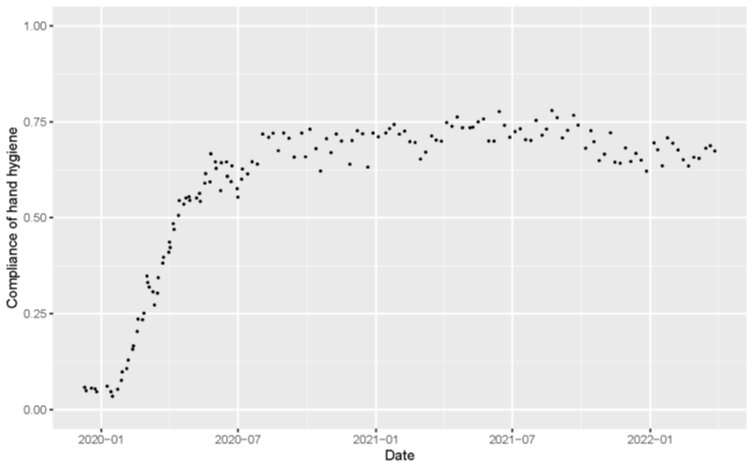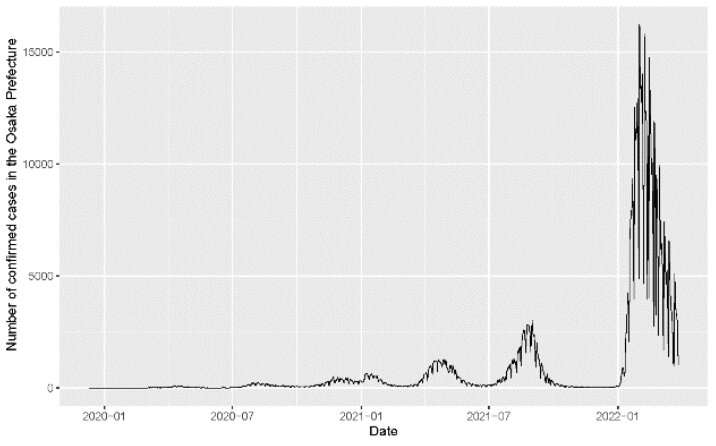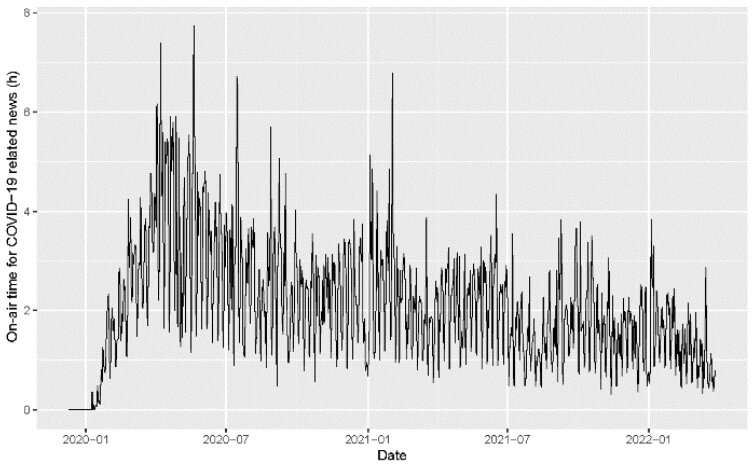Home » Health News »
Tune in, wash hands: Study finds COVID-19 TV coverage added momentum to hand hygiene boom

Long before COVID-19, washing and sterilizing hands were known to help prevent the spread of infections such as influenza, and hand hygiene practices were especially important in high-risk areas, such as hospitals. So it was something of a public health boon that COVID-19 abruptly increased hand hygiene awareness. A new study also found that media coverage of the pandemic had a knock-on effect.
The study, from Japan’s Osaka University, gained unique insight on how COVID-19’s onset and media coverage of the novel virus raised hand hygiene compliance from 5% to over 70% in a matter of months. The study’s researchers tracked whether TV coverage related to such compliance and sought correlations between hand hygiene and newly confirmed COVID-19 cases and deaths. Their article, “The impact of television on-air time on hand hygiene compliance behaviors during COVID-19 outbreak,” was published in the American Journal of Infection Control.
“We were routinely monitoring hospital visitors’ use of hand sterilizer in December 2019 because of the influenza season,” explains lead author Daiichi Morii. “The timing just happened to correspond with the pandemic onset. That let us compare hand hygiene compliance before, during, and after the onset.” As another research variable, TV coverage was used as a symbol of the degree of social concern about COVID-19, and looked at its correlation with compliance.
Visitors were observed to see whether they voluntarily used alcohol spray on their hands upon entering hospital premises. During the baseline observation period in December 2019, just 5.3% of the observed visitors sanitized their hands. On January 28, 2020, the number rose modestly to 7.6%. Then, as COVID-19 quickly emerged, things took a dramatic shift—compliance rose to near 70% by August 2020 and remained at 70%–75% until October 2021, before very gradually declining.

At the same time, the researchers wanted to examine how the level of societal concern affected hand hygiene compliance. “Media coverage can have a strong psychological impact and affect public concern,” notes co-author Asako Miura. “So we looked at on-air time covering COVID-19 on Japan’s national public TV broadcaster, NHK, in the region where the hospital is located. The time spiked at 7.7 hours/day in May 2020, and then varied depending on the infection trend.”
The researchers ran mathematical simulations to pair TV coverage with compliance, and found a strong statistical correlation—an added hour of news coverage increased compliance the next day by around 1%. They also tracked the trends in newly confirmed COVID-19 cases and deaths, but found no correlation with hand hygiene compliance.

Despite the huge increase in hand hygiene compliance when there’s an epidemic onset, and the evident role media plays in that compliance, complacency can set in. People hear the same warnings over and over, as the authors note, and grow tired of them. More research is therefore needed into how to maintain the positive impacts seen in this study. That maintenance could lead to a future with less infectious disease, and clean hands.
More information:
Daiichi MORII et al, The impact of television on-air time on hand hygiene compliance behaviors during COVID-19 outbreak, American Journal of Infection Control (2023). DOI: 10.1016/j.ajic.2023.03.001
Journal information:
American Journal of Infection Control
Source: Read Full Article


